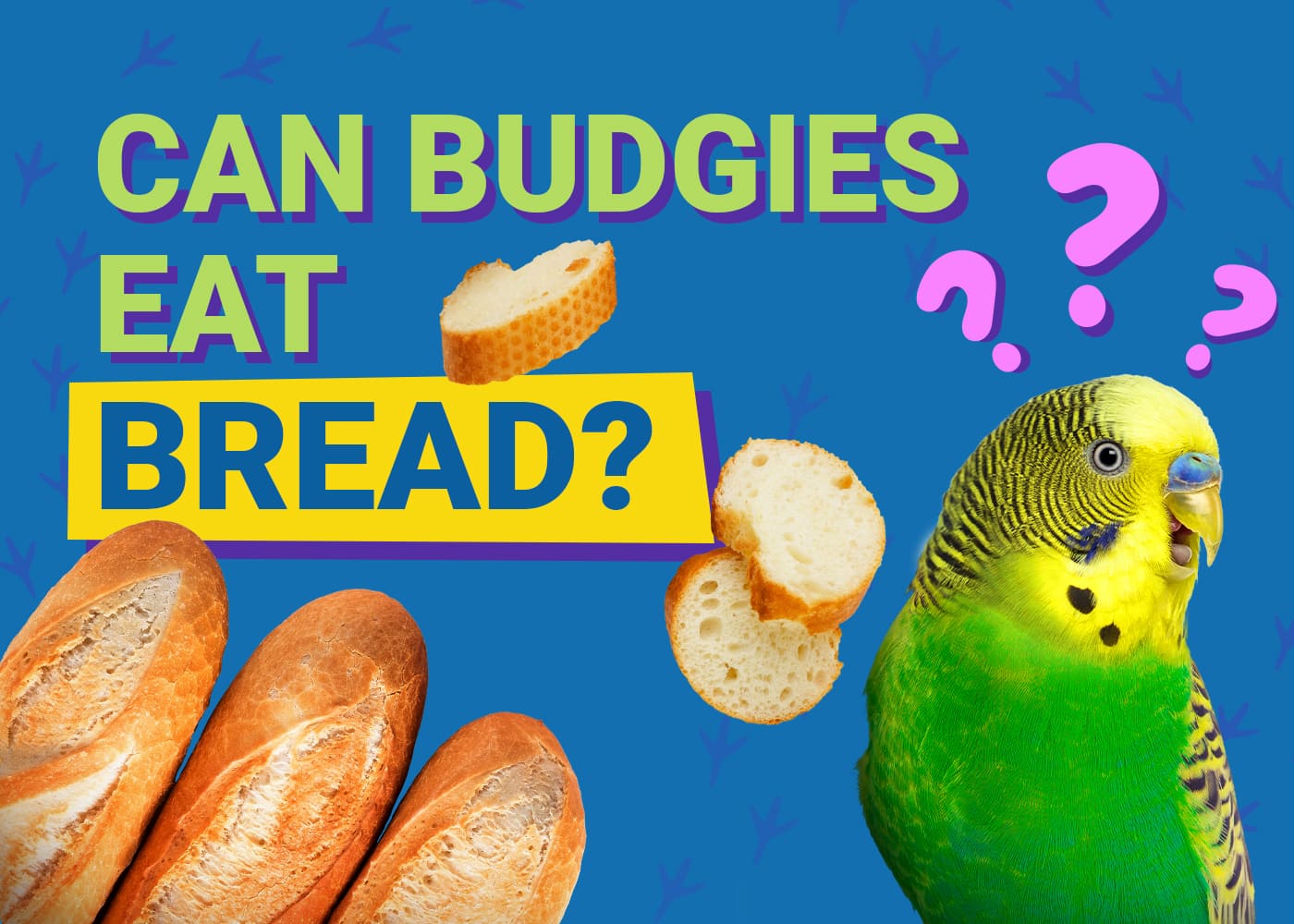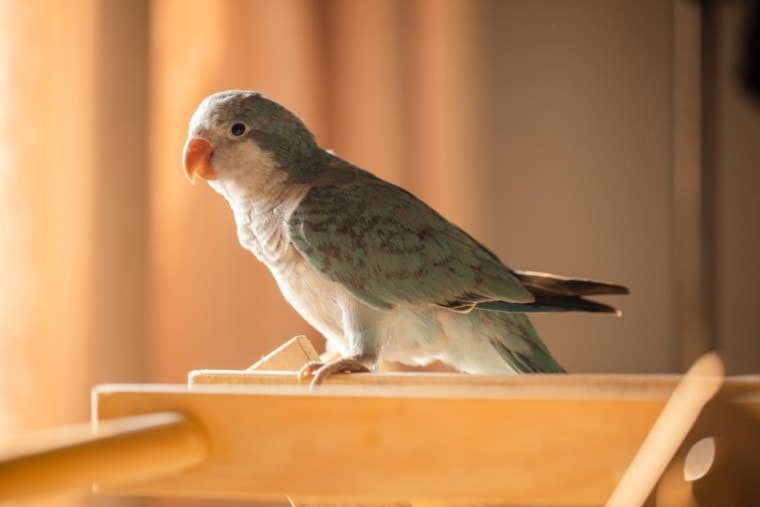
The monk parakeet is a trendy pet in the United States, and for a good reason. As one of the most brilliant birds on Earth, Monk parakeets can speak English words (with enough practice), perform tricks like rolling over or shaking hands with humans, and even play video games!
Monk parakeets are also relatively easy to care for; you need to know what they eat and how often they should be bathed. If you’re interested in getting a monk parakeet as your new feathered friend, this guide will help you learn more about them!
Species Overview
| Common Names: | Quaker Parrot |
| Scientific Name: | Myiopsitta monachus |
| Adult Size: | Between 11 and 12 inches (28 – 30 cm) |
| Life Expectancy: | 20 – 30 years |
Monk Parakeet Origin and History
The Monk parakeet (Myiopsitta monachus) is a lively bird species that originated in South America. They are also known as Quaker parrots or Monk parrots and are the third most popular pet in the United States. They were first found in the American public in 1872 and became famous for being easy to train and talk with.

Temperament
A Monk parakeet is often docile and tame and can be quite a social bird. They are very active for much of the day, flying around inside their cage to exercise. They do well with other parakeets but may not be good with different types of birds.
They do not talk much but will emit a shriek or scream if they are frightened or threatened. They also tend to bite, which is why they might not work well as pets because it can become challenging to meet their need for interaction.
Speech & Vocalizations
Monk parakeets are known for their talkativeness. They often make various sounds to communicate with each other, including hissing, clicking, and shrieking. They have an obvious squawk which is used to scare off other monk parakeets to claim territory.
Monk parakeet wings make a whirring sound when the bird is flapping them fast. The males make an unusual low-frequency croak which can be heard from up to 100 yards away. These birds will also use specific calls when entering or leaving the roosting area at night. They may also produce different calls depending on whether they are feeding young.
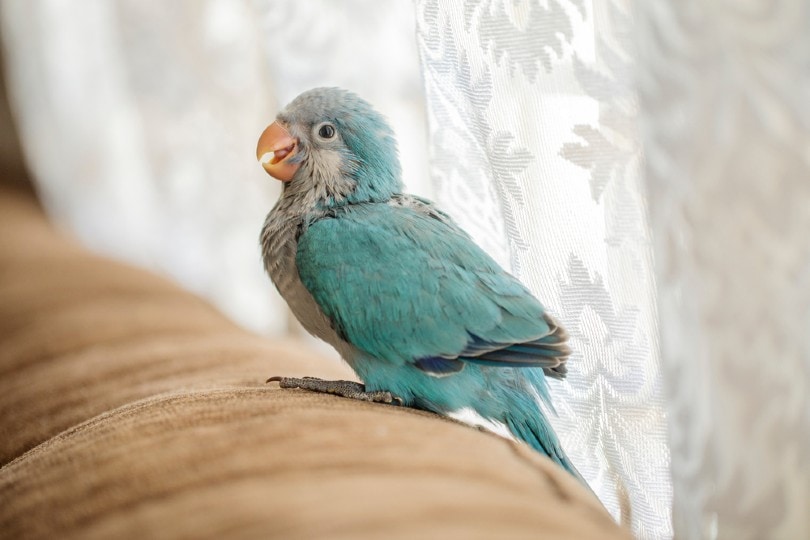
Monk Parakeet Colors and Markings
Monk parakeet’s colors and markings vary. They have many colors on their bodies, including various shades of green, blue, yellow, and red. They are also sometimes seen with dark gray or brown feathers on their heads and wings. They have olive to gray-green plumage with varying amounts of orange, maroon, or light blue on the head, neck, shoulders, and breast.
They have white eye-rings, which contrast with a dark eye stripe that extends from the eye down across the cheeks. The beaks are typically black but can range from off-white to pinkish-gray to deep purple. They have a long, pointed tail.
Caring for the Monk Parakeet
Monk parakeets are independent and curious birds that thrive on human companionship. They are social creatures, and they will respond well to interaction from their owners. They need attention every day to remain happy and healthy. Their lifespan is up to 30 years with the proper care and maintenance.
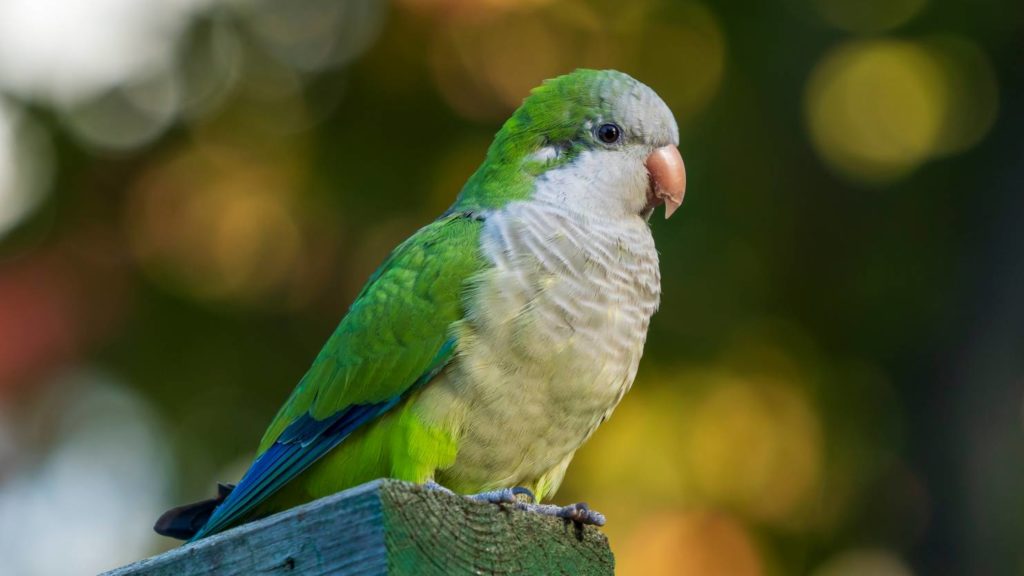
Habitat
They require a cage that is large enough for them to fly around in. Monk parakeet only needs a shallow water dish because they cannot swim and prefer to drink from running water rather than a water bowl. They like healthy seeds, nuts, fresh fruits, and vegetables.
They should never be fed anything with sugar in it because the Monk Parakeet’s diet is low-fat, high-fiber. They are prone to developing a vitamin A deficiency from consuming too many seed products, so they need fresh fruit like mangoes or carrots every day for their health and well-being. They should also be given a cuttlebone to help them maintain their calcium levels.
Common Health Problems
Monk parakeets are prone to several health issues. These species are susceptible to getting mites and lice from other monk parakeets and humans. Monk parakeet can pick up these infections in their environment and their food sources.
They are also susceptible to infection from bacteria, viruses, and fungi that are found on the ground or in other Monk parakeets’ nests where they sleep. They have been observed being infected with coccidiosis which is caused by a protozoan parasite called Eimeria tenella.
Diet and Nutrition
Monk parakeets are omnivorous animals that eat both plants and animals. They enjoy bananas, apples, dried fruits, nuts, seeds, sunflower seeds, and some vegetables. They require the intake of a lot of calcium as they have a genetic requirement for calcium consumption.
They can occasionally turn to nectar sucking if not exposed to sugar water or other vegetation. They can consume small amounts of salt by eating pickles, olives, or salty popcorn, but they should be careful about drinking too much salt as it is bad for their kidneys.
Monk parakeet caretakers should strive to provide around 1-3 tablespoons daily to help keep Monk parakeet kidneys healthy. They cannot consume large quantities of honey, cornbread, or greasy foods because these food types can create tumors in monk parakeet’s stomachs and intestines.
They should be fed various fruits and vegetables for optimum nutrition; they should never eat the same food for more than three to four days in a row. They should be given water twice daily, but no more as it can lead to kidney damage and even death.
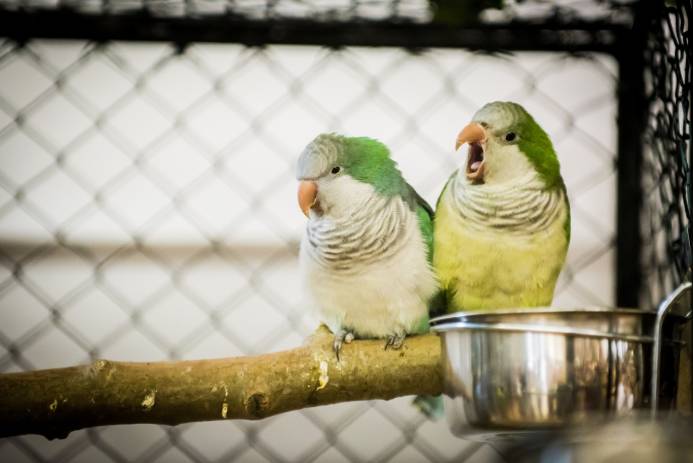
Exercise
The monk parakeet exercise is a specific type of movement geared towards strengthening the muscles in their neck, shoulder, and back areas. They will twist their bodies from side to side, or up and down, to move their heads around.
They will also flap their wings to stretch the muscles out, which provides them the ability to do this. monk parakeets are not known for being particularly social birds, so they do not interact with their cage mates and tend to be reserved around other Monk Parakeets. Monk Parakeets enjoy climbing, which typically entices them to exercise.
Where to Adopt or Buy a Monk Parakeet
Most pet stores are your best bet to find monk parakeets to buy. Monk parakeets can also be adopted from some animal shelters or rescue centers. Monk parakeets are not endangered, so they are relatively common birds found in most pet stores and avian facilities.
Monk parakeets require a lot of attention and care, but most people who choose to adopt them enjoy the personality of monk parakeets and want something interesting for their family. Monk parakeets make well-rounded pets for someone who has time and energy for them.

What is the Average Cost of a Monk Parakeet?
The Monk Parakeet Bird Species can range in price depending on where you purchase your Monk Parakeet Bird. Monk parakeets will typically cost around $600-$700 on average.
Conclusion
Monk parakeets are one of the most popular pet birds. With a personality that matches their name, they can make great companions for people who enjoy animals and nature. If you’re considering adding this species to your family, please read on for an in-depth guide about caring for them.
We hope we’ve covered some of your questions! As always, if you have more questions or would like help implementing these tips at home, please feel free to contact us anytime!
Featured Image Credit: V.S.Anandhakrishna, Shutterstock




